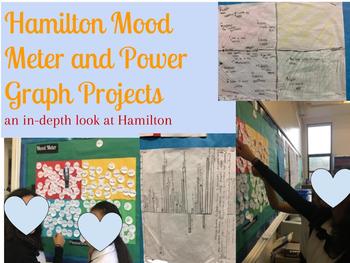Hamilton Project for Deep Analysis (and lots of fun!)
- XLSX
Description
This project is my favorite one of the year and my 7th and 8th graders adore it.
We use the Reading Guide (listed separatelyHERE) as a check for understanding and a prompt for analysis. This is typically discussed in partners and for special education accommodations it is done in a group.
Next, students analyze the songs with either the mood meter project or power graph project. For the mood meter, students write in the perspective of Hamilton (or another main character) for each song. This helps with emotional vocabulary, character analysis, character motives, integration of text evidence, understanding point of view, and making predictions about what the character will do next to stay in this emotional state or shift. To learn more about the mood meter (which has an app to help students on this project and throughout the year!) visit http://moodmeterapp.com/
For the power graph project, students define power and track a character's power after each song. This is a GREAT way to talk about the different types of power, character arc, tragic flaw, dramatic irony, and other parts of literary analysis.
We ended our unit with a LIP SYNC BATTLE and students were amazing. I highly suggest it. I hope you enjoy this unit as much as we did!
I have included student samples in the previews of this document.
Included here:
* mood meter directions
* mood meter graphic organizers (I preferred to do this online; you could also have students do this on paper)
* mood meter student example
* tab for students to add mood meter vocabulary
* power graph directions
* power graph graphic organizers
* power graph student example
In the cover photos for this file, I included pictures of the mood meter we made on my class bulletin board. This is a GREAT way to increase student involvement and could easily be made into a board you use all year (we cut out pictures of the characters and had students track them--you could use this for any story!)
Again, I HIGHLY SUGGEST using the reading guide either as a whole group activity or in partners to check for understanding (you could even use some questions as exit slips if you didn't want to use the complete guide). It really helped me gauge quickly how well my students were understanding and made it easier for students to go back and make revisions to their work (this play is LONG and they used the guide to figure out which songs to reread/relisten to).



